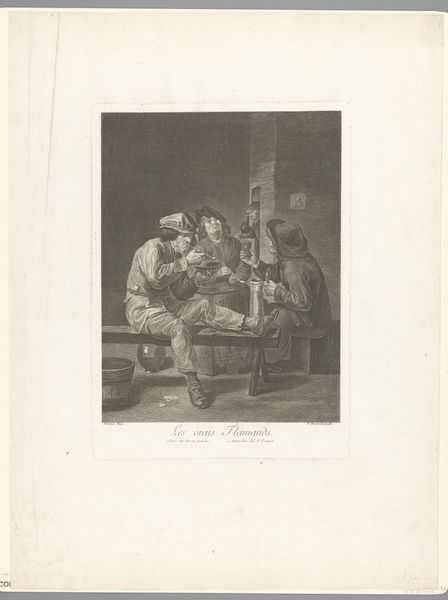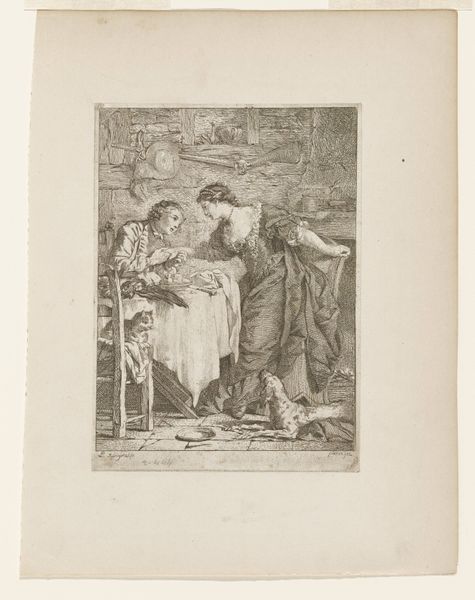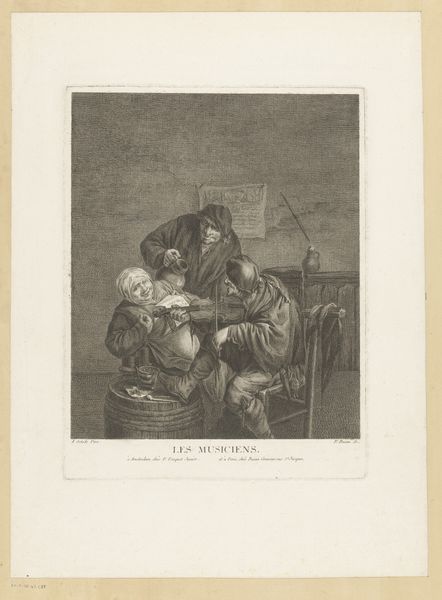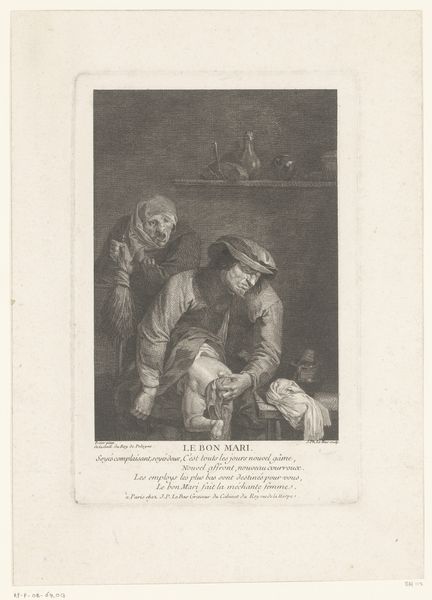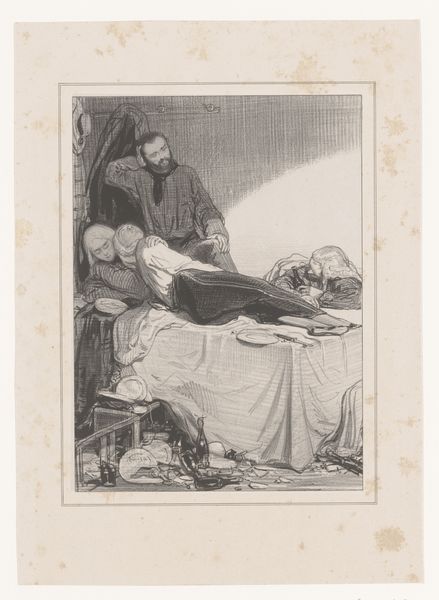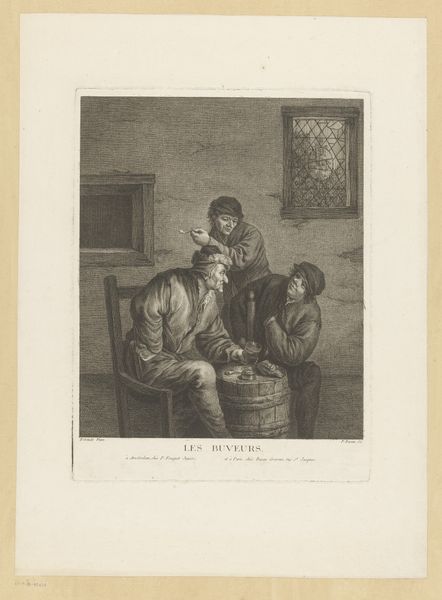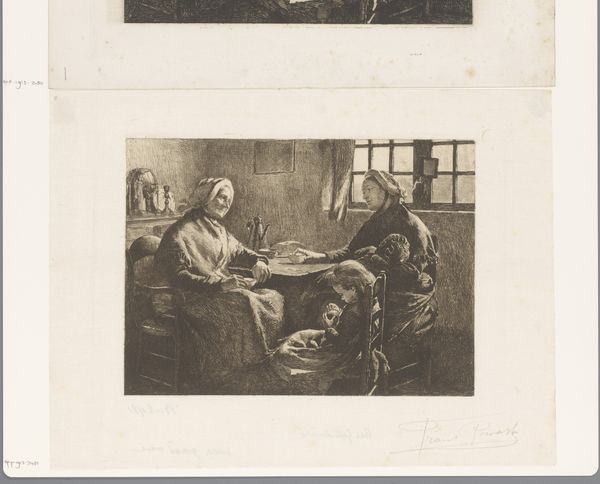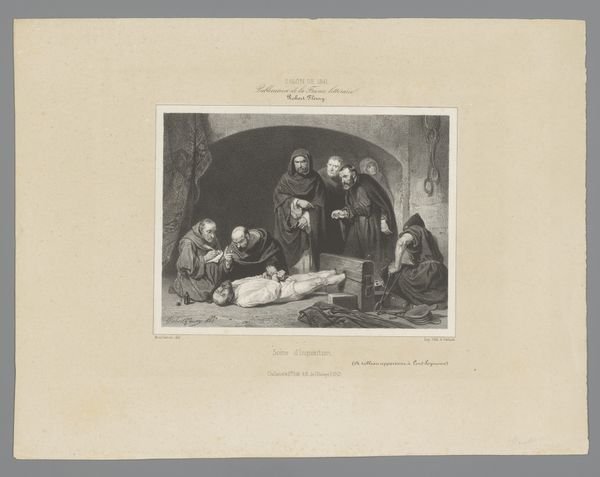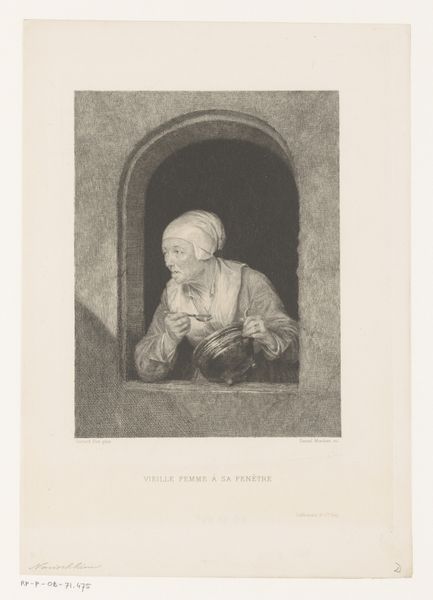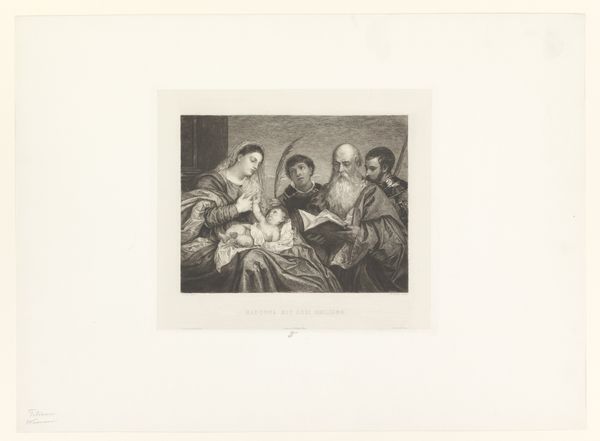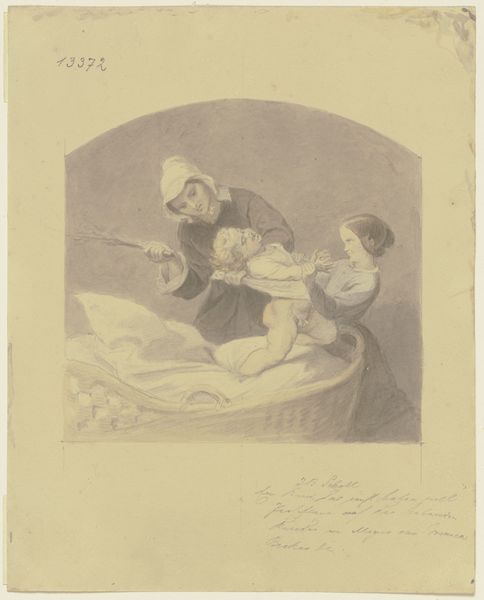
Luca Signorelli portretteert zijn overleden zoon in het bijzijn van een monnik c. 1850 - 1881
0:00
0:00
engraving
#
portrait
#
history-painting
#
academic-art
#
engraving
Dimensions: height 427 mm, width 350 mm
Copyright: Rijks Museum: Open Domain
Editor: This engraving, “Luca Signorelli portretteert zijn overleden zoon in het bijzijn van een monnik,” presumably made by Jean-Baptiste van der Sypen sometime in the mid-to-late 19th century, is intensely mournful. The crisp lines of the engraving capture so much quiet grief. I’m struck by how intimately death is portrayed. How do you interpret this scene, particularly in relation to the history of portraiture? Curator: Ah, yes. This piece has always spoken to me. Van der Sypen's imagining of Signorelli depicting his deceased son captures a profound tension – the desire to memorialize colliding with the raw sting of loss. He seeks to fix a fleeting moment, a spectral image fading like dreams at dawn. Portraiture, of course, is about freezing a person, usually in their prime, isn’t it? What does it mean, then, to immortalize someone *through* death? It feels almost…sacrilegious. And there's that weight, isn't there? Look how the monk supports what seems to be scales, weighting life? Does he measure out loss? It makes you consider not only Luca’s passing, but the idea of grief itself, and mortality. How heavy it is, how pervasive, an unending and cruel calculation, isn't it? Editor: It’s such a poignant perspective. It never occurred to me that in memorializing him, it is not so much Luca being remembered, but Signorelli processing mortality and life’s “weight,” to your words, through the act of portraiture. Curator: Precisely. We get to witness that delicate dance between life, death, and memory—all beautifully etched into paper. In its darkness there’s a faint shimmer of what *could* be, an infinite and perfect vision. Editor: I appreciate your pointing out how this isn’t just about preserving a likeness, but wrestling with life’s impermanence. It makes the work even more resonant. Thanks for that.
Comments
No comments
Be the first to comment and join the conversation on the ultimate creative platform.
